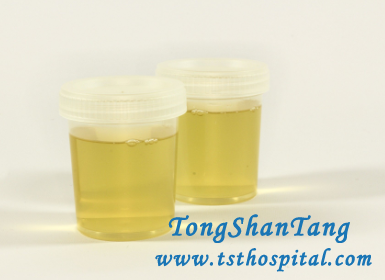 Refractory proteinuria usually can not get remission with steroids and immunosuppressants. For example, the refractory nephropathy we present today - Membranous Proliferative Nephropathy.
Refractory proteinuria usually can not get remission with steroids and immunosuppressants. For example, the refractory nephropathy we present today - Membranous Proliferative Nephropathy.
The number of patients with this kind of kidney disease accounts for 1/10 of the primary nephritis, and it is a kind of kidney disease with the most complications. Except for urinary protein, it is often accompanied by hypertension, hematuria, infection and so on.
Membranous Proliferative Nephropathy often presents refractory proteinuria, which can not be reduced by steroids and immunosuppressants. Since the onset, 50% to 60% of patients with Membranous Proliferative Nephropathy develop into renal failure within 10 years, and 40% of patients develop into uremia.
There are three types of membranous proliferative nephropathy: type 1, type 2 and type 3.
Type 2 membranous proliferative nephropathy is independent and is called dense deposit disease. And it is unique, with autoantibodies, genetic abnormality, and a genetic predisposition, and is the most difficult type of membranous proliferative nephropathy to treat. And less than 5% of patients get remission after treatment. The patients are mainly teenagers aged 8 to 16, and 50% of the patients develop into uremia within 10 years.
Although the outcome is generally poor, there is still much room for improvement in the treatment of the disease. If the appropriate treatment method is adopted, the curative effect can exceed the average, and most patients can achieve a relatively ideal effect.
Treatment methods:
1. Patients with asymptomatic proteinuria and normal renal function
Hormone and immunosuppressant are not recommended, because they have no effecton more than 90% of patients. ACEI and ARBs can be applied.
One study followed patients with membranous proliferative nephropathy for four years and found that 52 percent of patients who did not use ACEI/ARBs developed renal failure. However, only 20% of patients with renal failure were treated with ACEI/ARBs, indicating that ACEI/ARBs is effective for membranous proliferative nephropathy.
2. Patients with massive proteinuria
For patients with nephrotic syndrome with more than 3.5g/day of urinary protein, try to use the hormone: prednisone for 4-8 weeks at 1mg/kg per day, and then gradually reduce the amount.
If the urinary protein does not decrease after 4 months, the drug is discontinued. If there is a significant decrease in urinary protein, the treatment is maintained with a minimum effective dose.
3. Chinese Medicine treatment
Besides ACEI/ARBs, Chinese medicine can be used together to reduce proteinuria by about 30%. Chinese medicine can not only promote therapeutic effect, but also counteract the side effects of western medicine. For example, In the period of hormone reduction, adrenal cortical hypofunction can appear: fatigue, weakness, easy to catch a cold. This is the qi and Yin deficiency. The application of ginseng, astragalus, atractylodes macrocephala, fu ling and other traditional Chinese medicine can nourish Yin and consolidate immunity.
If you have refractory proteinuria that can not be reduced by conventional treatment, you can leave your problem below or contact online doctor. We are glad to help you analyze it and give you personalized guidance.
- Email:tsthospital@hotmail.com
- WhatsApp/WeChat/Phone Number:+86 15512139310
- Kidney Treatment Group:
- https://chat.whatsapp.com/2ZCOvebPJdr9QGkyfiqxDz
- Tag: CKD CKD Symptoms
- previous:4 Things to Help You Reduce Proteinuria
- next:How to Reduce Proteinuria, Keep Renal Function Stable and Avoid Renal Failure

